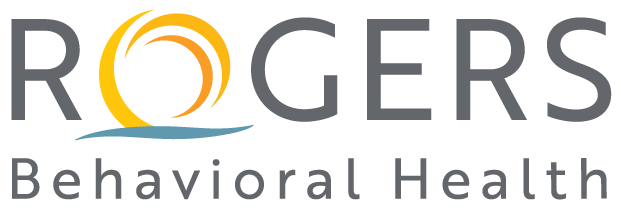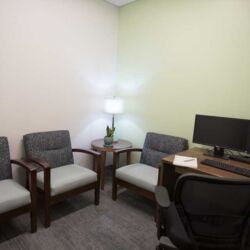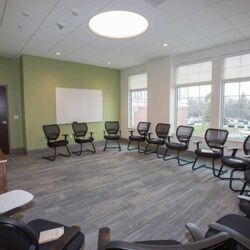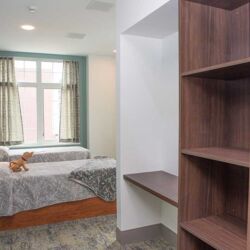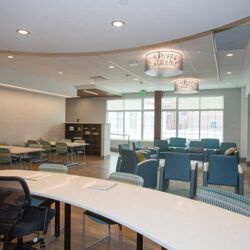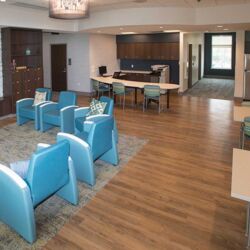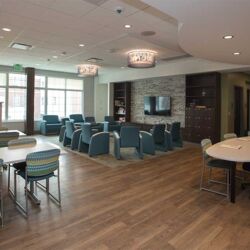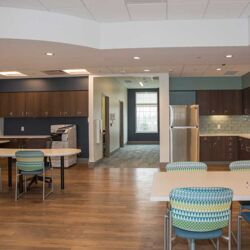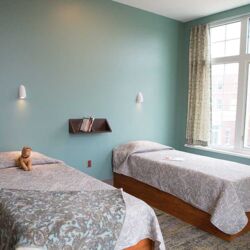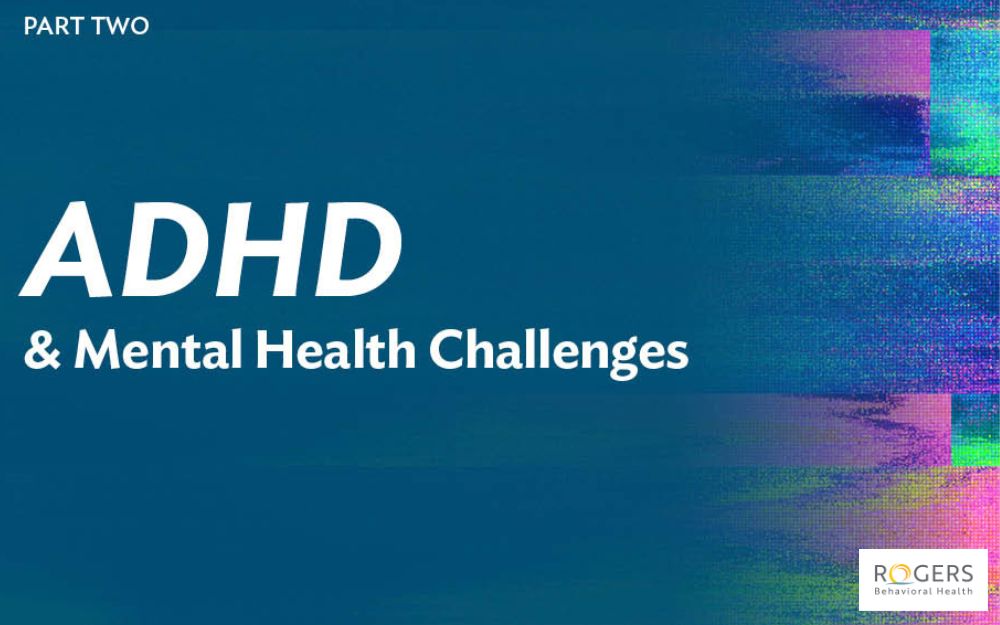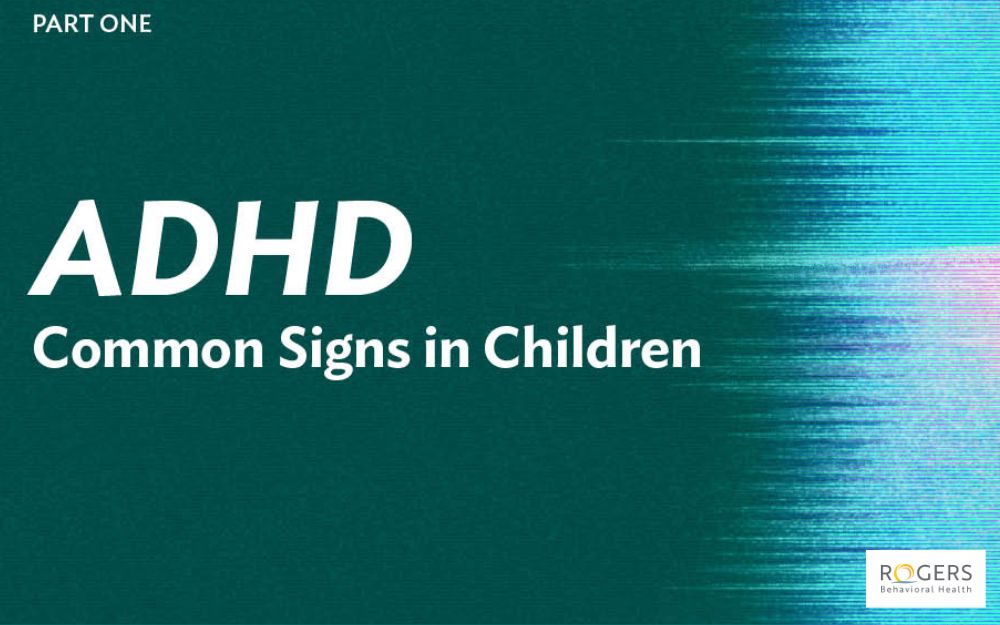
OCD, Anxiety, and Depression Center for Adolescent Residential Care
Residential OCD, Anxiety, and Depression Center open in Oconomowoc
Our residential OCD, Anxiety, and Depression Center for adolescents (age 13 to 17) offers the care, hope, and support for children with a primary diagnosis of an anxiety disorder with significant co-occurring depression. Located in Oconomowoc, Wisconsin, patients can expect a stay of eight to nine weeks, but timing is depending on each patient’s individual progress and situation.
Led by a board-certified psychiatrist, our multi-disciplinary team works together with adolescents in our care to address their OCD and anxiety. Patients will participate in cognitive behavioral therapy (CBT), exposure and response prevention (ERP), and behavioral activation. To address a child’s depression we also incorporate dialectical behavior therapy (DBT) components throughout treatment.
A combination of group and individual work is facilitated by the patient’s therapist, school teacher, experiential therapists, behavior specialists, and residential care specialists. Additionally, family involvement and education are key components of recovery that allow for more effective treatment and eases the transition after treatment.
During the patient’s stay they will have opportunities to participate in some off-campus activities designed to help them work on treatment goals in real world community-based activities. Active participation and effort to achieve their treatment goals are important parts of being successful during their stay.
Our goal as we prepare our patients for discharge is to have their treatment experience be a significant part of helping them learn and maintain a healthy, well balanced, and active lifestyle.
Treatment outcomes
The residential treatment team closely monitors treatment outcomes looking at the progress being made by each patient to ensure the effectiveness of the treatment provided. Using statistically-valid surveys of self-reported outcomes, the evidence-based approach by Rogers has been shown to decrease symptoms of OCD, depression, and anxiety, and improve quality of life among patients.
A typical day provides the structure and framework for adolescents to progress through treatment by participating in individual, group and family therapy sessions, attend to homework, go on off-campus outings, and more. This is just a sampling of a typical schedule:
| Morning | Afternoon | Evening |
|---|---|---|
| Breakfast | Lunch | Dinner |
| Cognitive behavioral therapy (CBT) with snack | Group therapy | School and therapeutic assignments |
| Experiential therapy | CBT assignments and snack | Phone time / structured leisure / personal time |
| Personal time | Experiential therapy | |
| School | ||
| Personal time |
-

Bradley L. Erickson, MD
Medical Director, Child and Adolescent Inpatient Care and OCD, Anxiety, and Depression Center Adolescent Residential Care, Psychiatrist
Bradley L. Erickson, MD, is board certified in both adult psychiatry and in child and adolescent psychiatry, and serves as medical director of Child and Adolescent Inpatient Care and OCD, Anxiety, ...
Read More -
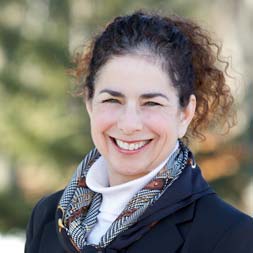
Sharon L. Hirsch, MD
Psychiatrist
Sharon L. Hirsch, MD, is a board-certified adult, child and adolescent psychiatrist at Rogers Behavioral Health in Oconomowoc. Dr. Hirsch received her medical degree from the University of Texas ...
Read More -
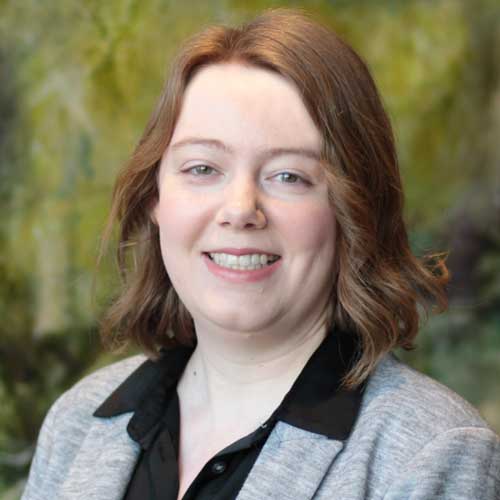
Sarah R. Lee, PhD, LP
Clinical Supervisor, Psychologist, OCD and Anxiety Center Children’s Residential Care; OCD, Anxiety, and Depression Center for Adolescent Residential Care
Sarah Lee, PhD, LP, is a licensed psychologist and clinical supervisor at Rogers in Oconomowoc, Wisconsin. She provides supervision and training to behavior specialists and therapists working with ...
Read More -

Jenna Ramljak, MSW, APSW
Manager of Residential Operations, Focus Depression Recovery Adolescent Residential Care, and OCD, Anxiety, and Depression Adolescent Residential Care, Oconomowoc
Jenna Ramljak, MSW, APSW, is manager of Residential Operations in Oconomowoc for Focus Depression Recovery Adolescent Residential Care, and OCD, Anxiety, and Depression Adolescent Residential ...
Read More
Concerned your teen is struggling and could benefit from residential treatment?
Contact us to request a free confidential screening and learn more.
Call 800-767-4411
Rising Above Borderline Personality Disorders | Briden's Story
Briden struggled with low self-esteem and self-harm. When she entered high school, she says her mental health started to spiral resulting in an ... Read More
